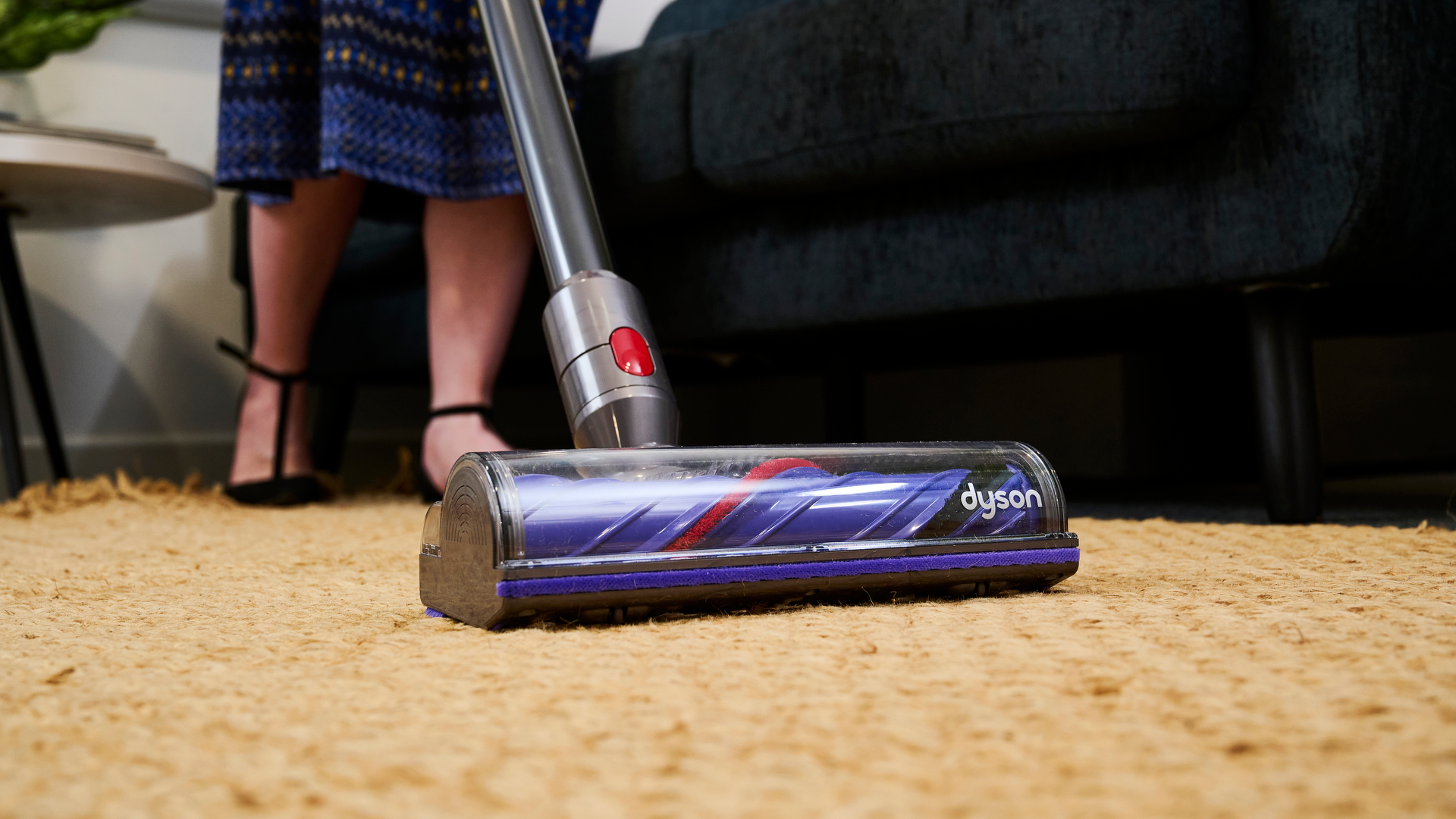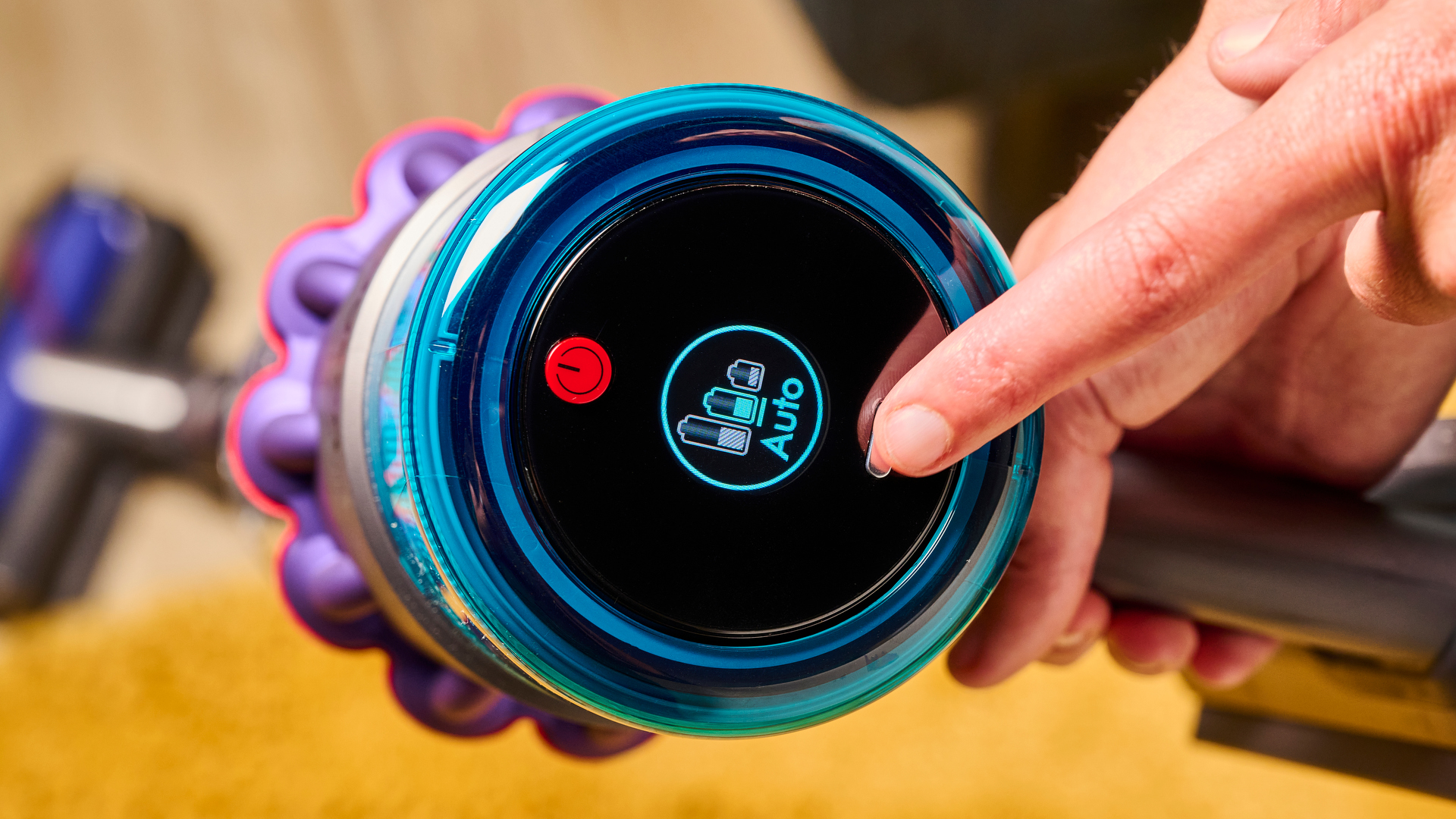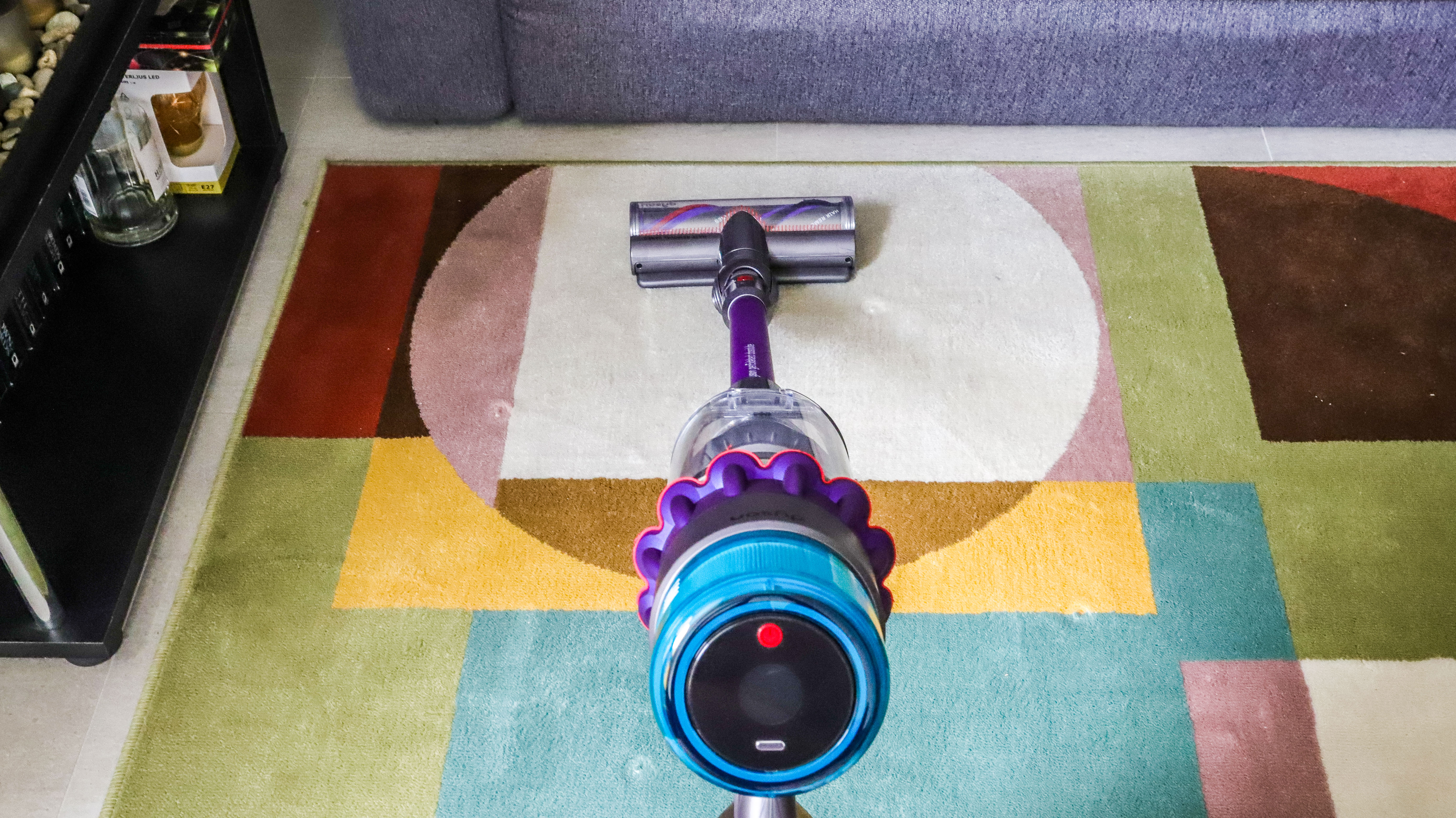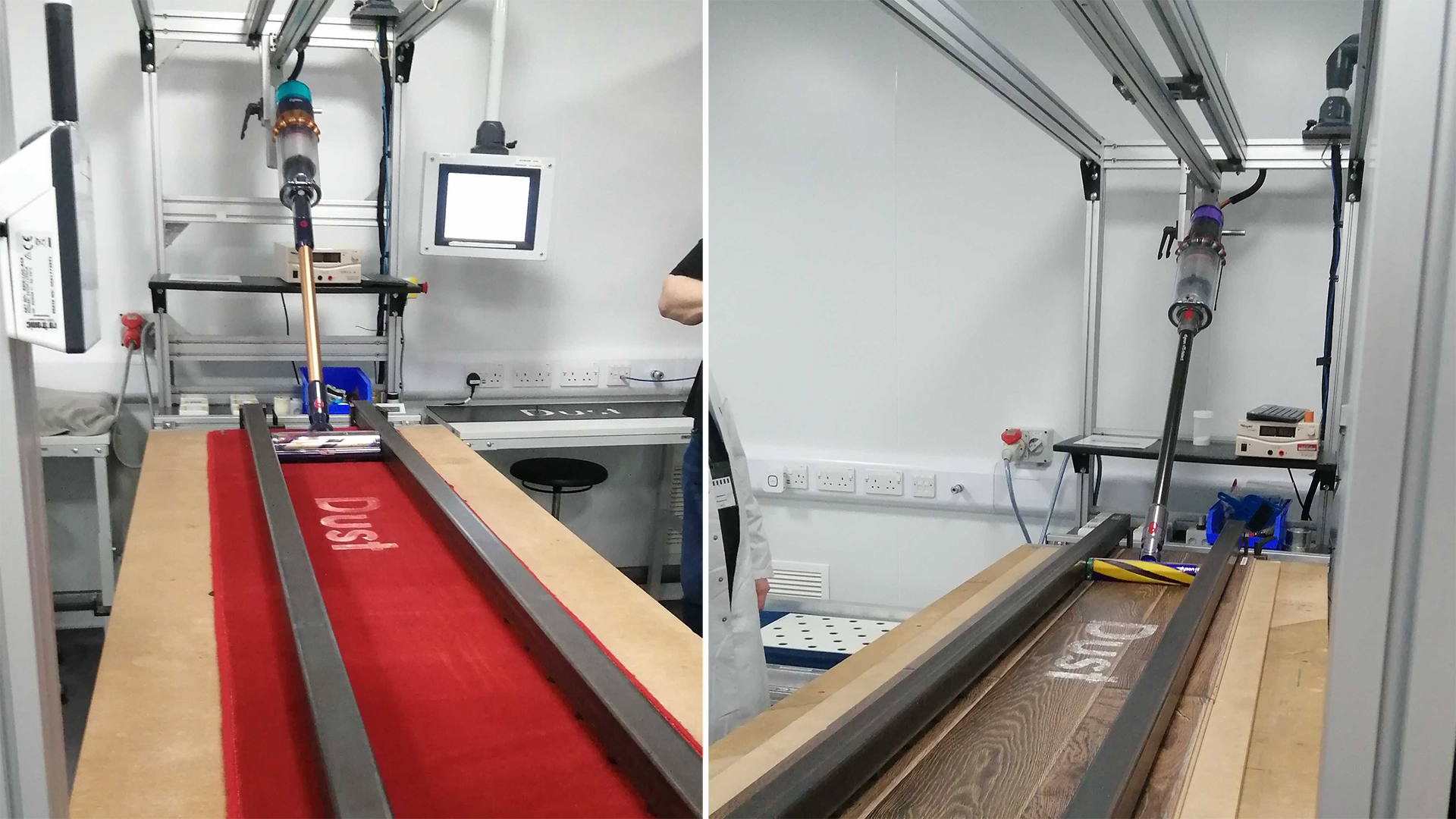"The slower you go, the more you will pick up" – Dyson engineer reveals the most efficient vacuum cleaning technique, backed up by science

Ever wondered if your vacuum cleaning technique is up to scratch? I spoke to a Dyson engineer – whose job includes investigating exactly how efficient each method of vacuuming is – to find out the ideal speed, setting and approach that will deliver the best results. Arming yourself with the best vacuum for the job is only half the battle.
Here's what Senior Floorcare Engineer Jonny Gray had to say.
How fast should you be vacuuming?
"For both carpet and hard floor, the slower you go, the more you will pick up," says Johnny. Exactly how slow will depend on the vacuum you have and the setting you're using, but Dyson studies found that when using the Dyson V15 – one of the best Dyson vacuums in the lineup – in Boost mode, 100% of dust was sucked up from the test carpet while moving at a speed of 0.25 meters per second.
For reference, the speed used in industry standard tests is 0.5m/s. That's representative of how fast most people vacuum. So you'd be going half as fast, and in the highest suction mode.
"On carpet, for every 0.25m/s you speed up, you will lose about an extra 3-5% dust pickup," adds Johnny. "The difference in performance across speeds is more significant in lower power modes, so the lower the power mode the slower you should move."

What about in 'Auto' mode?
A few of today's best cordless vacuums have an 'Auto' mode, where the suction will automatically ramp up or down depending on how much dust is on the floor. If your vacuum has one of these, it's the mode you'll likely be using the majority of the time – not least because max / boost modes are notoriously quick to run down the battery.
Johnny says that slowing down can be especially efficient when using Dyson's auto mode. "The most dramatic improvement for going slow is when pulling dust out of deep crevices in Auto mode. By slowing down from 0.5m/s to 0.25m/s, we see an 80% uplift in performance, picking up close to 100% of the dust below the cleaner head despite not being in the highest power setting."
Sign up for breaking news, reviews, opinion, top tech deals, and more.
Does that vary by particle size?
In Dyson's studies, a fine dust mixture with particles ranging from 90µm-200µm was used. "In principle, the most difficult particle size to collect is fine dust from a carpet, as this smaller particle falls deeper into the carpet which makes it more difficult to entrain," explains Johnny. "Moving slower will not only disturb the dust less (which may cause it to drop deeper into the carpet) but also provide a larger window of opportunity to entrain the particles."

Why is vacuuming slowly more effective?
The reason why slowing down makes for a more efficient clean is to do with the 'dwell time' (how long the cleaner head is positioned over a certain area of floor) and, when on carpet, the agitation of the fibers. "Increasing the dwell time provides more opportunity to remove the dust through mechanical agitation and airflow entrainment," says Johnny. "Agitating the carpet without airflow would cause it to fall deeper into the carpet, and so moving fast might cause more agitation with less opportunity to entrain the dust in the airflow."
Could you achieve the same result by going over the same spot a number of times?
Although completing more passes on the same area will increase the amount of dust that gets picked up, you might be better off going slowly instead. Dyson's tests found that pickup was slightly better (around 2%) when performing a single pass at half speed, rather than two passes at full speed. "For the same time spent vacuuming, you’re better off going at a slower speed and doing fewer passes over the same area," concludes Johnny.

How did you figure all this out?
The Dyson engineers completed a study using the test method standards laid out by the IEC (International Electrotechnical Commission) – an international organization that publishes international standards for electrical devices. "We have automated test rigs which use a robot arm to push and pull the vacuum across a surface and so we were able to programme the robot arm to a variety of speeds and test the vacuum on a range of surfaces across all power modes," Johnny explains.
You might also like...

Ruth is TechRadar's Homes Editor specializing in air (vacuum cleaners, fans, air purifiers), and hair (hair dryers, straighteners and stylers). She has been in consumer journalism since 2020, reviewing and writing about everything from outdoor kit to mattresses and wellness gadgets, with stints on Tom's Guide and T3.
You must confirm your public display name before commenting
Please logout and then login again, you will then be prompted to enter your display name.